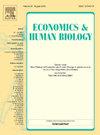对高脂、高糖和高钠食品最低定价政策的影响:环境、饮食和福利分析
IF 1.8
3区 医学
Q2 ECONOMICS
引用次数: 0
摘要
高脂肪、高糖和高盐食品(HFSS)对人们的健康、社会福祉和环境有害。最低单位定价已显示出减少烟酒消费的潜力,但在食品和饮料行业并不受欢迎。本研究旨在模拟HFSS的影子价格或最低价格,这可能会减少10% %的需求,并估计对苏格兰营养,气候和经济福利的影响。将线性近似精确仿射石指数(LA/EASI)需求模型应用于Kantar Worldpanel (KWP)的家庭消费数据,以获得弹性,用于模拟所考虑的HFSS类别的最低价格。利用夏普指标数据库(SHARP- id)估算温室气体排放,估算co2当量变化;利用生活成本指数的对数估算政策的经济福利效应。与基线价格相比,可食用冰淇淋和冰淇淋的预期最低价格涨幅约为28 %,含糖饮料为9 %,所有布丁和甜点的预期最低价格涨幅约为10-17 %;饼干和咸味食品;还有糖果、蛋糕、糕点和含糖早餐食品。这对非目标食物也有影响。例如,水果和蔬菜的购买量分别下降了0.47 %和0.82 %,而糖和蜜饯的购买量增加了1.30 %,这略微影响了政策的好处。积极的一面是,肉类、鱼类和酒精的购买量减少,乳制品购买量增加。对于人均膳食碳足迹,该政策使净平均总二氧化碳当量排放量减少了0.7 %。然而,消费者将需要12.3% %的支出增长来消费与价格变化前相同的一篮子食品。综上所述,尽管该政策有望改善气候健康,但如果消费者决定不改变其消费习惯,将会对非目标食品产生意想不到的负面影响,以及经济福利损失。建议政策制定者在将最低价格引入食品和饮料行业之前,考虑最低价格的净总效应。本文章由计算机程序翻译,如有差异,请以英文原文为准。
Impacts of a minimum pricing policy on high fat, sugar and sodium (HFSS) foods: Environmental, dietary and welfare analysis
Foods high in fat, sugar and salt (HFSS) are detrimental to people’s health, social well-being and the environment. Minimum unit pricing has shown potential to reduce cigarette and alcohol consumption, but it is unpopular in the food and drinks sectors. This research aims to simulate the shadow price or minimum price for HFSS that could potentially reduce demand by 10 %, and estimate the impacts on nutrition, climate and economic welfare in Scotland. The Linear Approximate Exact Affine Stone Index (LA/EASI) demand model was applied to household consumption data from Kantar Worldpanel (KWP) to derive elasticities that were used to simulate the minimum prices for the HFSS categories considered. Greenhouse gas emission estimates were derived from the SHARP Indicators Database (SHARP-ID) to estimate CO2-eq changes, and the log of living cost index was used to estimate the economic welfare effect of the policy. The expected minimum increment in prices with respect to the baseline price was approximately 28 % for edible ices and ice cream, 9 % for sugary drinks and 10–17 % for total puddings and desserts; biscuits and savouries; and confectionery, cakes, pastries and sugar morning goods. This had implications for non-targeted foods. For instance, the purchase of fruit and vegetables decreased by 0.47 % and 0.82 % respectively, whilst sugar and preserve purchases increased by 1.30 %, marginally discounting the benefits of the policy. On the positive side, purchases of meat, fish and alcohol decreased, and dairy product purchases increased. For the average per capita dietary carbon footprint, the policy reduced net average total CO2-eq emissions by 0.7 %. However, consumers would require a 12.3 % increase in expenditure to consume the same basket of food as before the price change. In summary, although the policy is expected to improve climate health, there will be negative unintended effects on non-targeted foods, as well as economic welfare loss if consumers decide not to change their consumption habits. It is recommended that policymakers consider the net total effect of the minimum pricing before introducing it in the food and drinks sector.
求助全文
通过发布文献求助,成功后即可免费获取论文全文。
去求助
来源期刊

Economics & Human Biology
医学-公共卫生、环境卫生与职业卫生
CiteScore
4.50
自引率
12.00%
发文量
85
审稿时长
61 days
期刊介绍:
Economics and Human Biology is devoted to the exploration of the effect of socio-economic processes on human beings as biological organisms. Research covered in this (quarterly) interdisciplinary journal is not bound by temporal or geographic limitations.
 求助内容:
求助内容: 应助结果提醒方式:
应助结果提醒方式:


